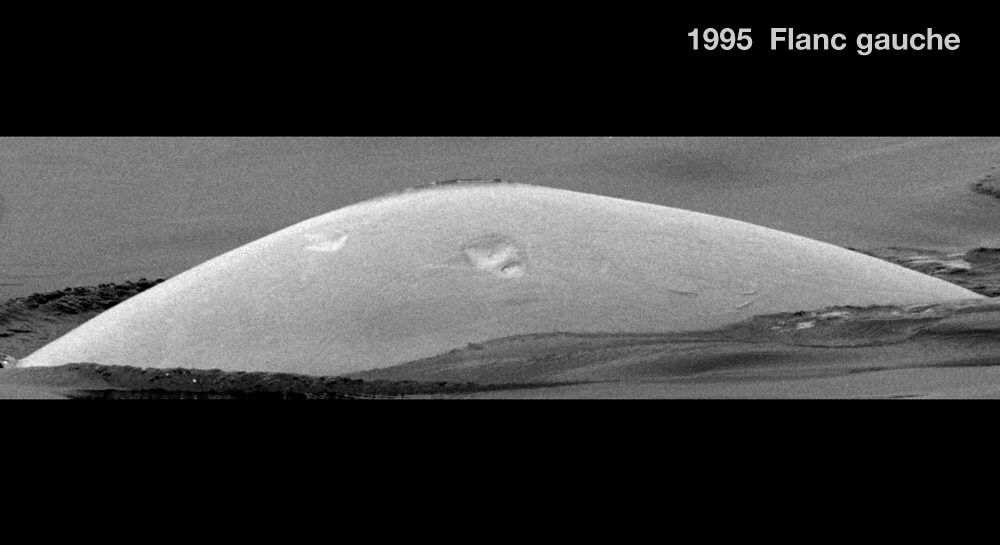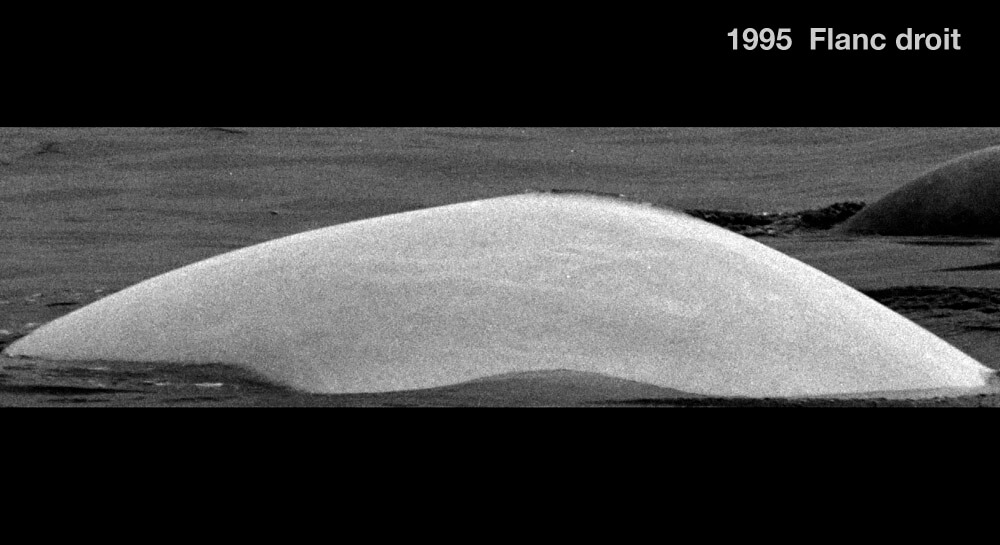Coquine-Blanche
Beluga


Adopted by Tourisme Charlevoix and by their Royal Highness, The Duke and Duchess of York
-
ID number
DL0010
-
Sex
Presumed female
-
Year of birth
Unknown
-
Known Since
1986
Distinctive traits
Coquine-Blanche can be identified by the three circular depressions on her left flank. There are also three small indentations in her dorsal crest, and a long white line that has been visible since 1995.
Life history
Our very first encounter with Coquine-Blanche was in 1986. At the time, she was a juvenile beluga. Over the years, her coloring faded and, by 2000, she had become slightly gray. We didn’t see her again until 2008, when she was perfectly white. The transition to white occurs around the age of 12 to 16. So, for the moment, Coquine-Blanche’s year of birth remains unknown.
Her size and the company she keeps lead us to believe that Coquine-Blanche is a female. She belongs to the community of females on the south shore of the St. Lawrence.
For 10 years, Coquine-Blanche has been missing. What happened to her? Did she die? Did she move to another area? Did she remain invisible to researchers? Then, in 2008, she reappeared in the same area where she was often seen in the past, on Île Verte-Cacouna. Then it was seen again in 2010 and 2012.
Observations history in the Estuary
Years in which the animal was not observed Years in which the animal was observed
Latest news
We’re at the mouth of the Saguenay fjord when we spot Coquine-Blanche in a herd of some 15 individuals. The herd is made up of adults and young. There’s also a newborn in the herd, but our observations don’t allow us to determine who the mother is.
At the time of our encounter, the herd was active, moving up the Saguenay fjord. After an hour’s observation, the animals disperse and head off in different directions. We decide to head for Ile Rouge, an island in the middle of the estuary, where we’ve just spotted another herd of belugas.
Our boat faces the church, near the Rivière-du-Loup wharf. Coquine-Blanche is spotted in a herd of about twenty animals. The herd is a mix of young grays, completely white adults like Coquine-Blanche, and a single newborn. We observed this herd for almost three hours. The shape of the herd changed a lot during these hours. At the start of the observation, the herd was separated into three large groups of 6 to 8 individuals. Then, as we approached the Île Blanche reef opposite the municipality of Cacouna, the herd grew from 20 to 30 belugas. At the end of our observation, there was a “mega-group” of 12 belugas at the head of the herd, followed by several smaller groups of 2 to 3 individuals, somewhat like the shape of a rosary.
Sponsors
Tourisme Charlevoix adopted Coquine-Blanche (1989).
Their Royal Highness, The Duke and Duchess of York adopted Coquine-Blanche (1989).



